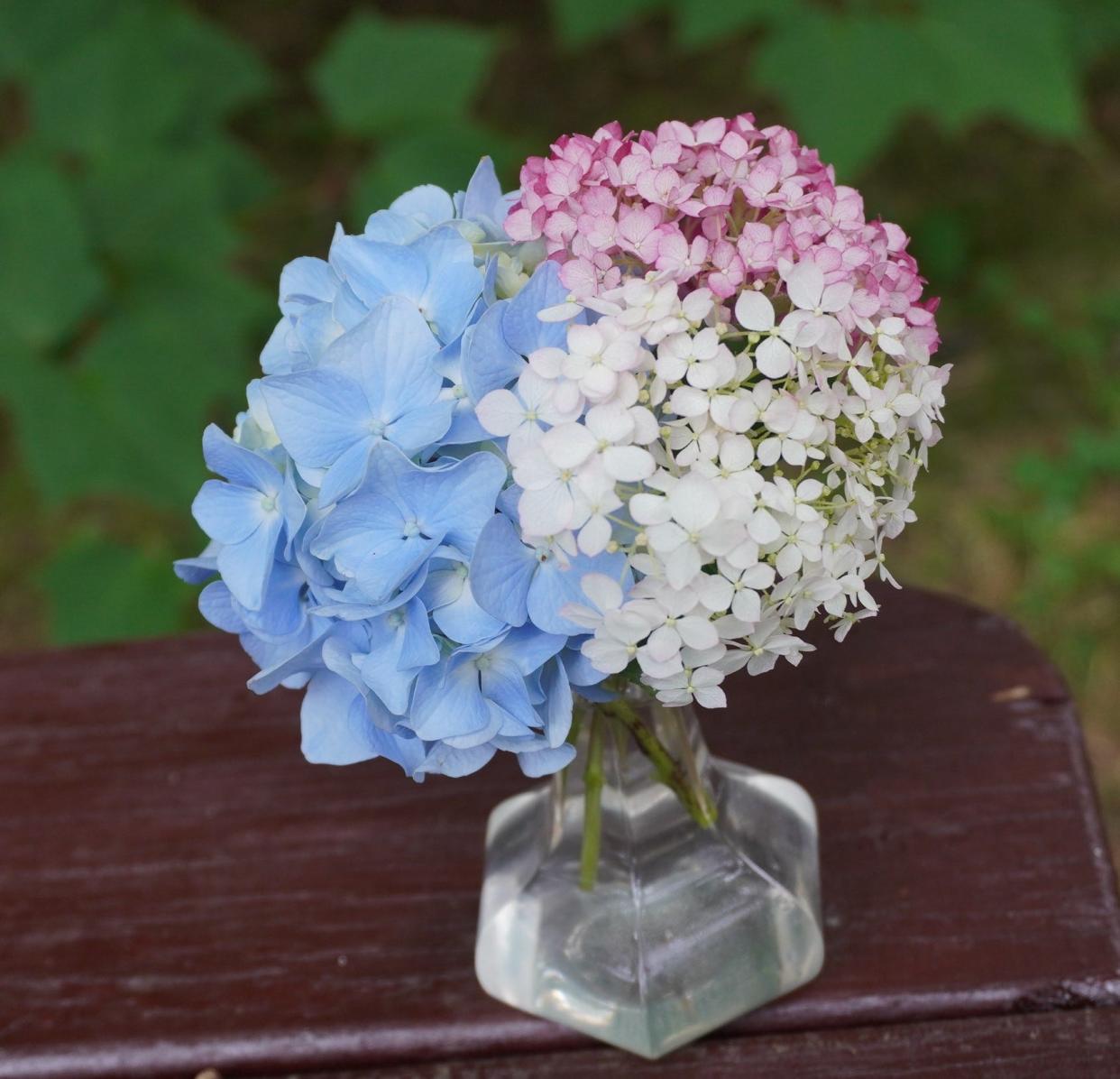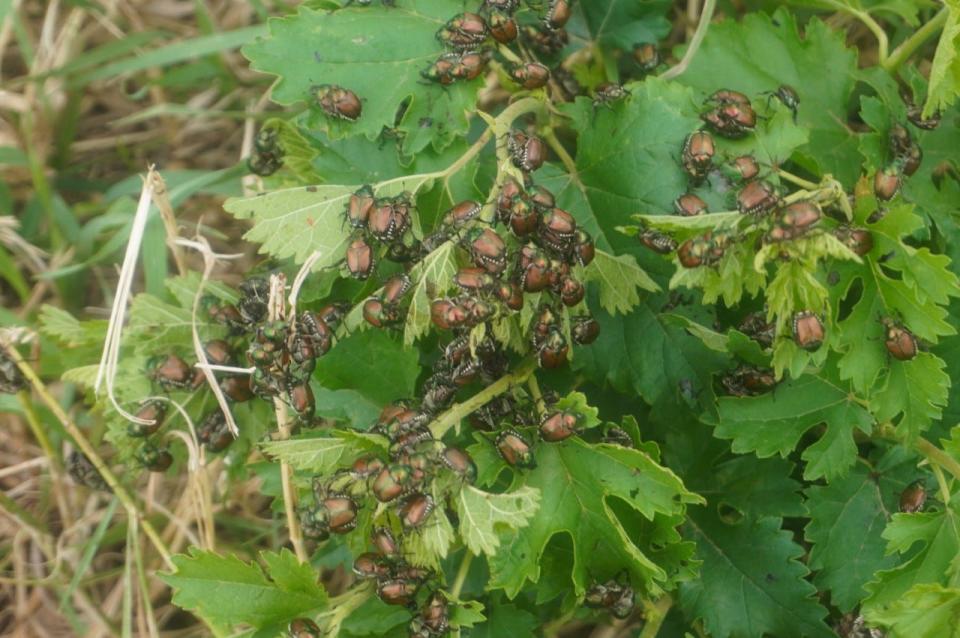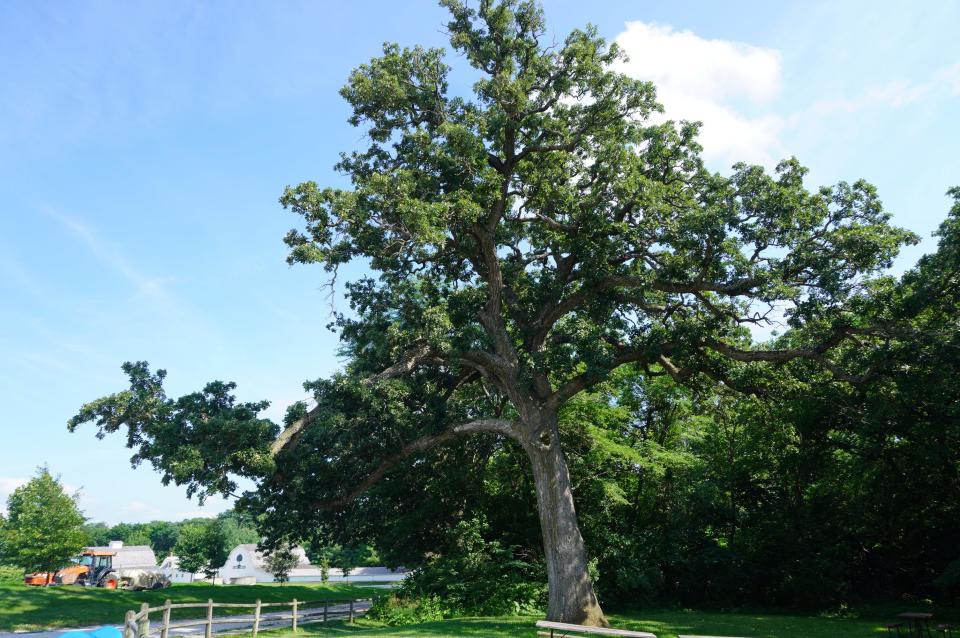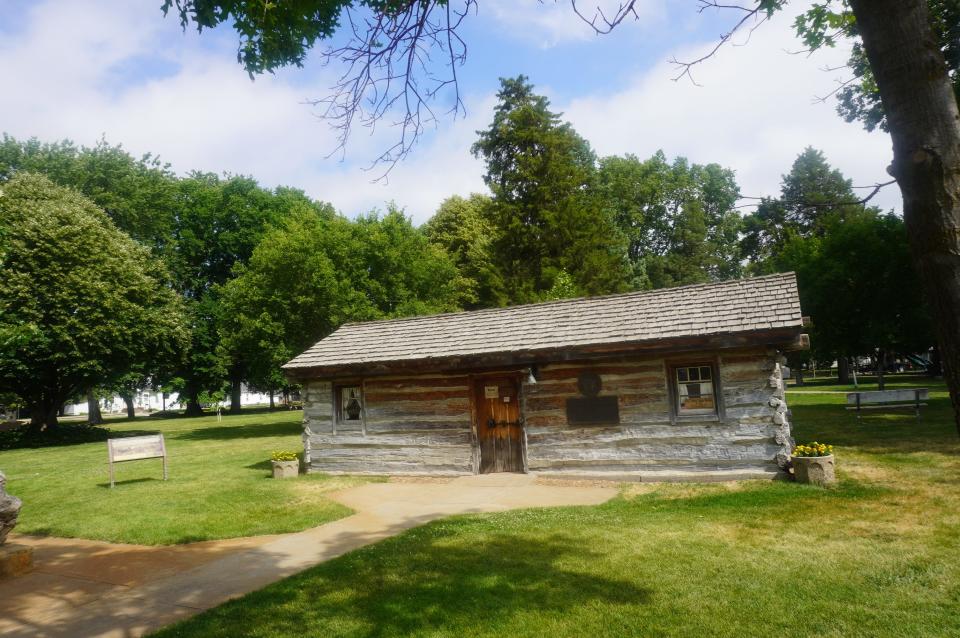Plant Lovers’ Almanac: Hydrangeas, Japanese beetles and a 200-year-old bur oak

We were in Colorado and missed the Fourth of July in Ohio, but we returned to a medley of hydrangea blossoms providing a red-white-and-blue welcome in our yard. There was the blue of “Endless Summer,” the reddish color of “Invincibelle Mini-Mauvette” and the white from a range of additional unnamed hydrangea types in our garden.
Plant Lovers' Almanac: An ode to black raspberries, columbines, aspens and apples
Without realizing it, we now have 18 hydrangeas, from many modern smooth hydrangea (Hydrangea arborescens) cultivars, to old standbys of the small tree/large shrub PG hydrangea (Hydrangea paniculata ‘Grandiflora’), planted before we arrived 35 years ago.
We have a climbing hydrangea and oak-leaf hydrangeas, lace-caps and more and more, biggering and biggering our collection, semi-consciously over the years. Then suddenly, I noted one of my favorite early July roadside jazz: the red, white and blue combination of the medley of red sweet clover, Queen Anne’s lace and sky-blue chicory wildflower/weeds.
Our return to Secrest Arboretum displayed additional greetings, with the glory of panicled, frilly flowers of bottlebrush buckeye, the striking pinwheel purples of Stoke’s aster or Stokesia daisy (Stokesia laevis), pawpaw fruits still two months or more from maturing, and a mystery flower that turned out to be an evening primrose that somehow made its way into our yard, fulfilling its biennial destiny by blooming butter-yellow this year before going to seed.

Meet the beetles
Before we traveled to Colorado three weeks ago, the first adult Japanese beetles (Popillia japonica) of the year were emerging in Northeast Ohio.
Upon our return this past week, the populations were higher, a bit more than we’ve seen in recent years, thriving on and causing significant leaf skeletonization on an “American Sentry” basswood (American linden) at Secrest Arboretum. Nearby was a crapemyrtle on which I did not notice a great deal of damage, but when Secrest curator Jason Veil tweaked a branch, out flew hundreds of this pesky scarab beetle.
This was nothing compared to a dystopian scene at a rest area where we stopped in Nebraska. Not only was there herbicide drift injury to maples from a nearby farm field, but the Japanese beetle populations bordered on the obscene.
Seemingly every leaf was largely absent and covered with swarming beetles; trees, annual and perennial herbaceous vegetation, a real mess.

When first viewing the scene, was I seeing bees swarming about hives? No, as I approached, it was Japanese beetles, a half dozen or so that I un-nested from my hair for 10 minutes or so down the road.
Yikes. These copper- and green-colored Japanese beetles (just over ½ inch in length and just under ½ inch in width) were first noticed in the United States in a Philadelphia-area nursery in 1916, presumably from a shipment of iris bulbs, and soon became quite the rage here.
In Japan, populations had long ago equilibrated due to natural predator populations. When invading almost all U.S. states, they start with a few, reach alarming numbers soon thereafter, then typically develop a generally diminishing series of peaks and valleys over the decades. Ohio has long ago seen more modest numbers in most years and areas but they can still result in cosmetic injury to over 300 host plants, from lindens to roses to grapevines.
I have never seen anything like those Nebraska numbers. Some of the West Coast states have recent or no infestations, though I read a report from the state of Washington of only three observed in 2020, with over 20,000 the next year in one small community alone. Typically, infestations are quite localized, depending upon turfgrass as habitats for their egg and larval stages and environmental conditions such as soil acidity and moisture that can affect egg survival.
Insecticides can control Japanese beetles, and their larval stage — one of our common white grubs — but most people pick them off when they can, or ignore their short annual reign and their perennial cycling when they are hopefully less plentiful.
Whatever you do, avoid the simple pleasures of catching and disposing of this insect by using a Japanese beetle trap.
As my buddy Joe Boggs, OSU Extension entomologist, notes in his recent Buckeye yard and Garden Line post (bygl.osu.edu/node 2010), careful research shows that traps with food-like scents (for these beetles) and sex pheromones indeed attract a lot of beetles, but for your “highly localized” perspective, traps in your yards simply attract more beetles from your neighbors than you would otherwise have: a classic case of “unintended consequences.”
A visit to Arbor Day Farm
A final recap of our western trip return: a visit to the Arbor Day Farm outside Nebraska City, Nebraska. In southeastern Nebraska there are forested areas, unlike much of the long Great Plains flatness that you traverse, starting in eastern Colorado, with a short tree stop midway at an original Pony Express cabin in Gothenburg, Nebraska, and its encompassing park and Ehmen Park Arboretum.

It may seem enigmatic that Arbor Day developed in Nebraska, so unlike our eastern treasure trove of trees and more trees. But that is the point, they often cherish their sparser tree populations more so for their pale traces of eastern forestlands. Visit the 200-year-old Arbor Day bur oak, the woodsy interior architecture of the Lied Lodge there, and if you have children or grandchildren enjoy that Pony Express stop in Gothenburg, and its oasis of trees.
According to the brochure, the Ehmen Arboretum site started with no trees in 1888, grew with 600 tree from the city fathers and mothers in 1901, and now with over 60 species and over 100 trees: everything from soaring lindens to “Autumn Splendor” buckeye, a Minnesota Landscape Arboretum tri-brid of Ohio buckeye, red buckeye, and yellow buckeye! My favorite tree — crab apple — is represented by “Indian Magic” with its autumnal-colored tips of the foliage and fall fruits. In Ohio, “Indian Magic” is too prone to apple scab, but in drier Nebraska it shines.

It is several months late for Ohio’s official Arbor Day in April, but celebrations are appropriate all year.
Speaking of trees and time, hear from J. Sterling Morton, the originator of Arbor Day: “Arbor Day is not like other holidays. Each of those reposes on the past, while Arbor Day proposes for the future.”
Jim Chatfield is a horticulture educator and professor emeritus at Ohio State University Extension. If you have questions about caring for your garden and other topics, write to chatfield.1@osu.edu or call 330-466-0270. Please include your phone number if you write.
More: Plant Lovers' Almanac: More about the bugs and the bees
Sea World revisited: Vintage photos of Ohio marine park
This article originally appeared on Akron Beacon Journal: Plant Lovers’ Almanac: Hydrangeas, Japanese beetles and an old oak

